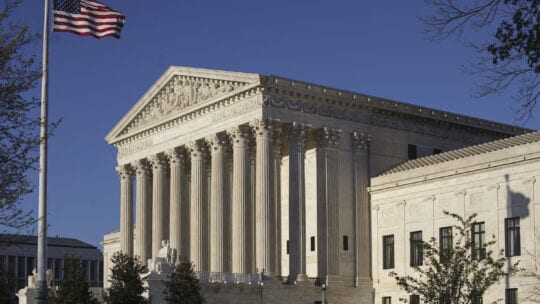
COVID-19 has forced changes in just about everything, including the U.S. court system. Nowhere are those adaptations more tradition-breaking than at the Supreme Court (SCOTUS). The court's new virtual setting requires critical adjustments to media relations strategy, yet these changes may offer unforeseen opportunities.
As is always the case in litigation communication, media relations must ensure that anything said to journalists–and therefore to the court of public opinion–supports the legal strategy. Still, PR's job is to help communicate and defend a legal position.
Briefing Reporters
One challenge remote SCOTUS hearings present is that reporters and lawyers, must rely on livestream audio that the court provides. SCOTUS initiated this unprecedented practice of providing broad access to its hearings as COVID-19 first wreaked havoc in the US last spring.
Because any reporter with WiFi can now report on SCOTUS hearings, a far larger, broader group of journalists may need your attention–as compared to the smaller group of SCOTUS reporters PR pros worked with during non-pandemic times. Journalists without knowledge of the many intricacies or historical context of a case can now cover it. Many may choose not to contact you in advance, making it impossible to ensure each reporter has relevant background about those you represent and their position on the case.
Accordingly, PR pros need to develop revised strategies to identify and participate in curtain-raiser articles, as well as media reports that appear immediately after oral arguments conclude.
For example, let's say a national U.S. network news program requests an interview ahead of a hearing involving an overseas client. PR pros should arrange a remote preparatory session for the interviewee. Do your best to approximate the conditions of the virtual interview and prepare the person to concisely articulate the organization’s position to an American TV audience.
The resulting interview can allow the company you represent to make key points in a much more compelling manner than if a correspondent read a statement during the segment.
No More On The Steps
Virtual SCOTUS hearings eliminate other opportunities too. For example, the traditional media availability with lawyers on the iconic steps of the Supreme Court. Again, this means PR pros need to adapt.
For example, without a way to speak with every reporter before articles run, PR pros must truth squad coverage in real-time. They should immediately identify inaccuracies or mischaracterizations that need correction or more accurate context to reflect the client’s position. Speed becomes critical since errors, misstatements and misleading headlines can spread online via social media, newsletters, and reposting.
Working quickly after a recent SCOTUS hearing on a case involving an EU-based client, communicators obtained corrections and/or updates in dozens of articles–from major global wire service reports and top-tier dailies in the U.S. and EU to key trade media. You can achieve similar results to benefit those you represent.
While holding a news conference on the iconic steps of the Supreme Court is a profound experience in our field, successfully adjusting media relations strategy for a SCOTUS hearing during COVID-19 can offer useful lessons.
Eric Andrus is EVP of KARV Communications
